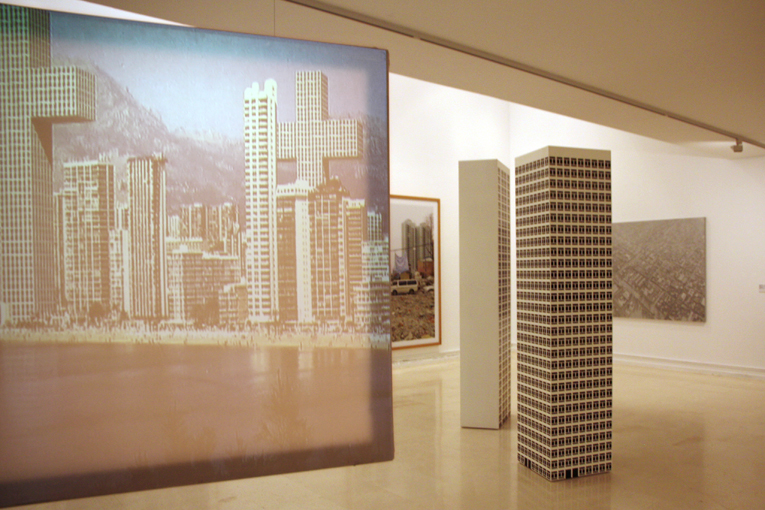
 |
||
|
According to the UN’s latest State of World Population report, today, more than half of the population of the world lives in the cities, many of which are great metropolises. This datum is specially striking if we take into account that, up unitl now, the greatest majority of the population lived in rural areas, keeping a close relationship with the country and the agricultural production. This situation has changed a lot during the last decades, since the Industrial Revolution and the rural flight. The latest exhibition opened at IVAM, Total City, deals precisely with metropolises and the new concept of city, a term which, increasingly, is falling short to define the main cities of the 21st century, according to the words of José Miguel G.Cortés, commissioner of the exhibition and professor of Theory of Art at the Polytechnic University of Valencia. «We are heading towards megalopolises, the concept of city falls short when we want to talk about places like Dubai, Shanghai, Rio de Janeiro or Mexico D.F.», José Miguel G. Cortés pointed out at the opening on the 3rd of May. The exhibition holds five different interconnected spaces, which have been set up by Ignacio Carbó. It intends to encourage people to «think about the way in which cities determine our relationships, from the cultural to the economic sphere», explained the commissioner. While entering gallery nº 4 in IVAM, the visitor will probably feel overwhelmed in front of a chaos made of screens, the interplay of lights and shadows and noises of everyday life in these megacities, which grow and expand in developing countries gaining ground to the sea, farmlands and the sky, coming from different directions. Forty three artists have taken part in Total CIty, where photopraghy and audiovisual materials play an important role. However, this work didn’t want to leave aside the other side of these new megalopolises and it also reflects the problems this kind of city, the sprawling city, usually has— high density of population, overpopulation, lack of natural resources and high levels of pollution. |
© J. V. Bernabeu Projecte Costa Ibèrica (1988), the architects of the dutch reseaarch MDVRV wanted to reflect Benidorm’s reality, like a «monster» created by the human-being, such as the «turistic planet at the outskirts of the Galaxy». «The visitor will probably feel overwhelmed in front of a chaos made of screens, the interplay of lights and shadows and noises of everyday life in these megacities coming from differente directions» |
|
 |
© J. V. Bernabeu
|
|
|
When finishing the route, and after having passed through spaces devoted to overpopulation, the consummer society or the speed and mobility of the cities, the visitor of Total City will bump into a dark and chaotic room, where gigantic screens show how the cities of the future might look like. These virtual cities and which seem taken out from a science-fiction novel, those that the architects of the Londoner Archigram group imagined and which increasingly look more real and feasible. |
|
|
 |
First of all, the work Soft Sell (1993-2003), of Diller+Scofidio,bids the welcome to the hall Espais al·lienats. This hall it’s dedicated to the «deep, veiled and very subtle control» of the society through entertainment and consumersim. «These cities are radically different from those of the old Europe, where distances are shorter, where there is a well-defined historic city centre and where their inhabitants can meet to have a cup of coffe or to go for a walk» |
|
|
These cities are radically different from those of the old Europe, where distances are shorter, where there is a well-defined historic city centre and where their inhabitants can meet to have a cup of coffe or to go for a walk. Dubai, Lagos or Sao Paulo are not cities to go for walks and this is one of their defining charactersitics and which determine the lives and relationships of their inhabitants. Maybe due to this fact, Europeans percieve this kind of metropolises as something alien. And the fact is that most of them are cities that have developed in faraway countries, like Brazil, China, Mexico or Nigeria. All in all, some experts assert that London might become, in a few years, in the first European case of megalopolis. José Vicente Bernabeu Pardo. Student of Journalism at the University of València. |
||





